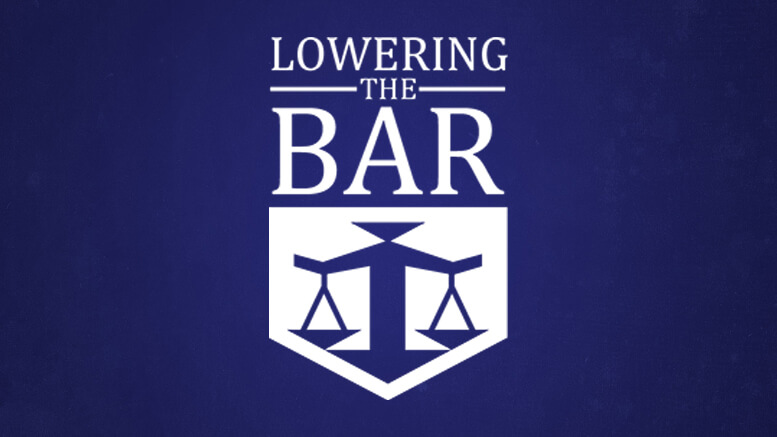Yes, it is goofy to show up for court dressed like Thomas Jefferson (see “I Am Incompetent, Lawyer Argues Unnecessarily” (Sept. 18)), but at least that guy didn’t pretend he was Jefferson or that he and TJ were actually pals.
He also didn’t paint himself into a Jefferson portrait and use it as an endorsement, I’ll give him that too.
 Not the first tale of misleading Photoshoppery I’ve told, but it is the first involving a lawyer. (This one, in which a lawyer put his face on the Lincoln Memorial, is not in the same category.) On September 11, California’s State Bar Court recommended suspension (PDF) for a lawyer who it found had, among other things, engaged in deceptive advertising. Specifically, the “Publicity” page on her website included a large number of photos in which the lawyer was shown cavorting (okay, posing) with a wide variety of political and entertainment celebrities. She was shown doing this, but an expert testified and the court found that “many, and perhaps all, of these photos were created by taking original celebrity photos and then overlaying Respondent’s image” onto them.
Not the first tale of misleading Photoshoppery I’ve told, but it is the first involving a lawyer. (This one, in which a lawyer put his face on the Lincoln Memorial, is not in the same category.) On September 11, California’s State Bar Court recommended suspension (PDF) for a lawyer who it found had, among other things, engaged in deceptive advertising. Specifically, the “Publicity” page on her website included a large number of photos in which the lawyer was shown cavorting (okay, posing) with a wide variety of political and entertainment celebrities. She was shown doing this, but an expert testified and the court found that “many, and perhaps all, of these photos were created by taking original celebrity photos and then overlaying Respondent’s image” onto them.
The webpage, which as of today, at least is still up, doesn’t actually say anything about the pictures, but the implication that the lawyer is not just popular but also politically connected is obvious. The court found this to be misleading, and the lawyer did not do much to convince it otherwise. In fact, it is not clear what the hell she was doing.
The court says that other than denying the allegations, her response was “a 16-page soliloquy with little to no rational connection to the charges at hand.” The court was referring mainly to the lawyer’s argument that “with regard to false statements and misleading advertisement[s], none other than Natalie Portman comes to mind.” (I know that’s who I think of.) This involved the claim that Natalie Portman’s head was digitally added to someone else’s body for the movie “Black Swan,” and then Natalie Portman lied about this and yet went on to win an Oscar.
It got weirder.
The court awarded bonus points for her refusal to cooperate with the investigation, or even pay attention during the hearing:
[A]lthough [Respondent] was physically present during the trial of this matter, she refused to provide any functional participation in it, whether as a self-represented party or as a witness. Instead, she sat throughout the proceeding at counsel table, obviously engaged in some other activity (which she described at one point as writing her request for an interim appeal…).
I guess it’s okay to start work on your appeal before the trial is over, but if you’re going to do that during trial don’t tell the judge you’re doing it.
Previous heroes of digital enhancement include the aspiring Alabama politician who put herself in a picture with Alabama coach Nick Saban to make it look like he had endorsed her, digitally eliminating Saban’s wife from the picture to do it. I also liked this one, in which a candidate for mayor of New Orleans offered a photo of herself in the “French Quarter” that actually turned out to be the “New Orleans Square” section of Disneyland. (After Disney objected, they digitally removed a Disney logo but kept using the fake picture.)
My favorite, though, remains the case of Daryl Simon, who sought leniency from the judge about to sentence him for credit-card fraud by Photoshopping himself into pictures of other people doing charity work. That ended up getting him an extra four years, because he unwisely used the same image of himself in two of the doctored photos. I’d have first adjusted his sentence down four years for having the cojones to try that but then raised it by eight for poor judgment and technical skill. Same result, but more amusing to me, the judge.
